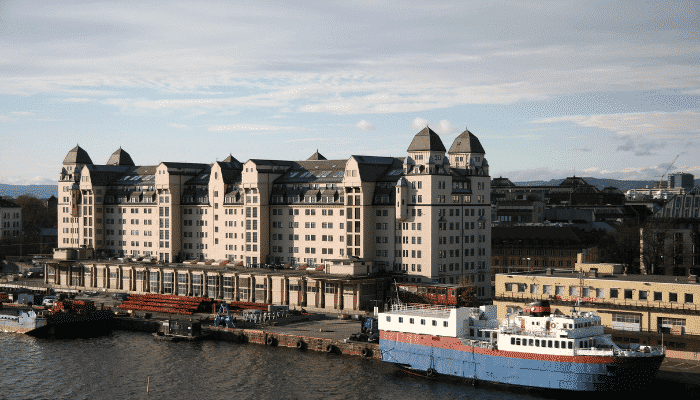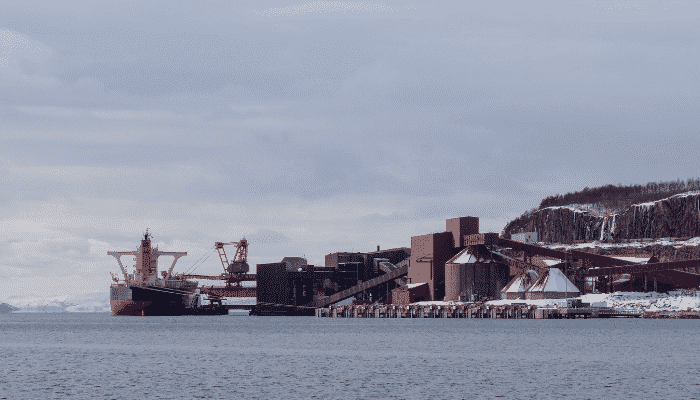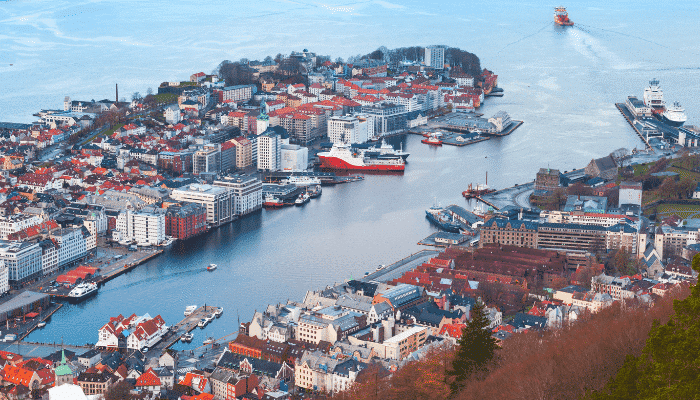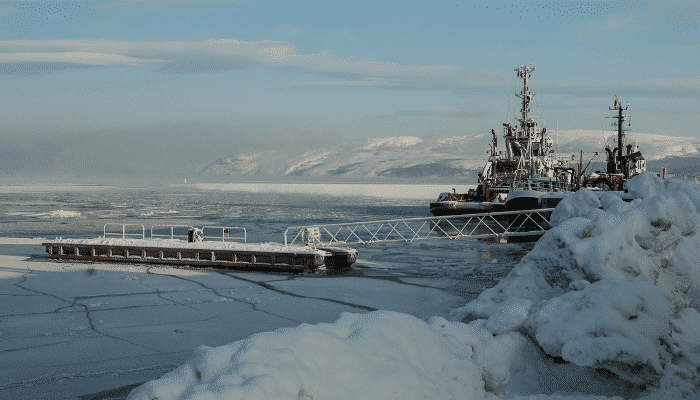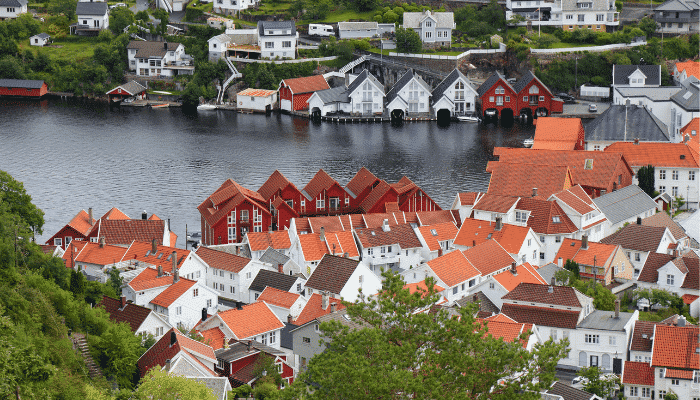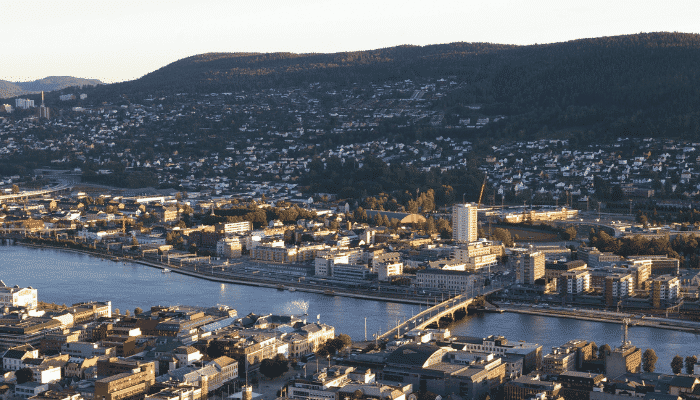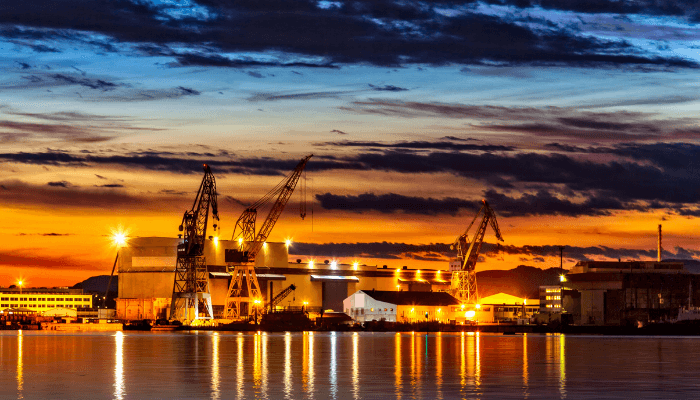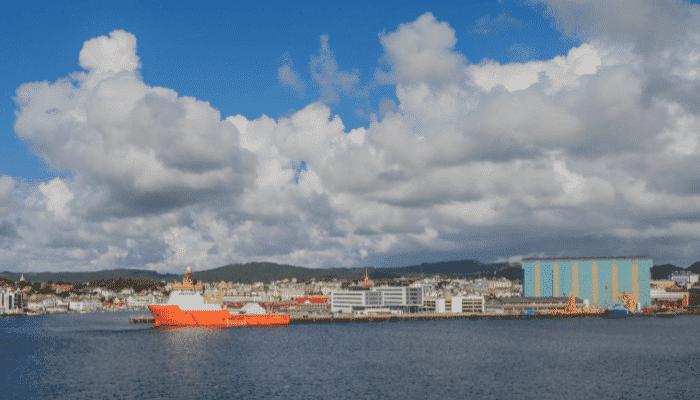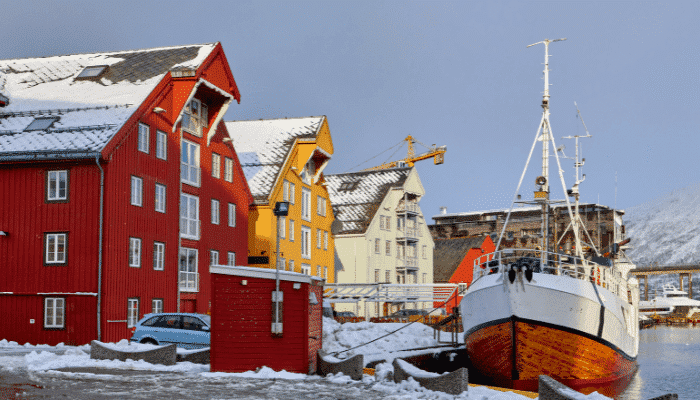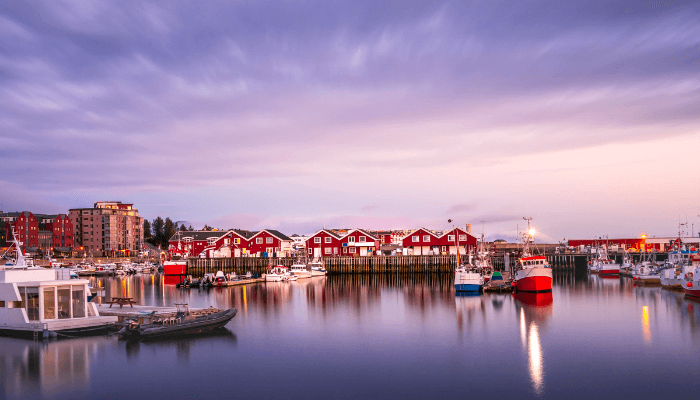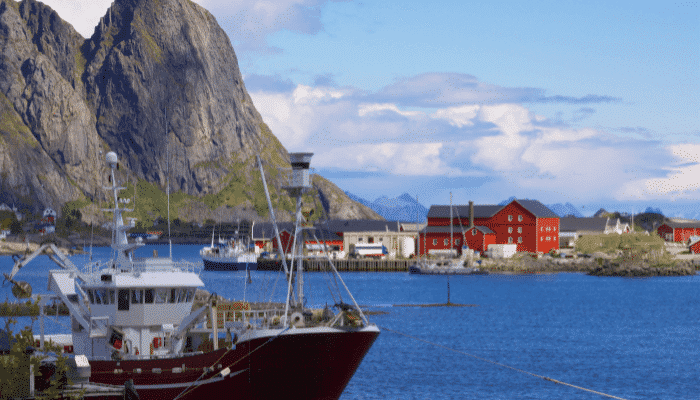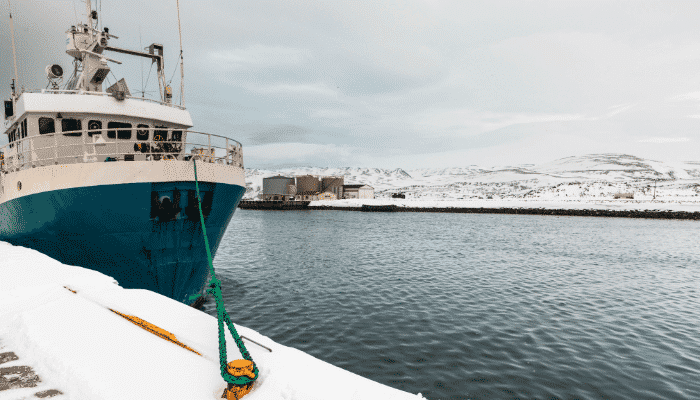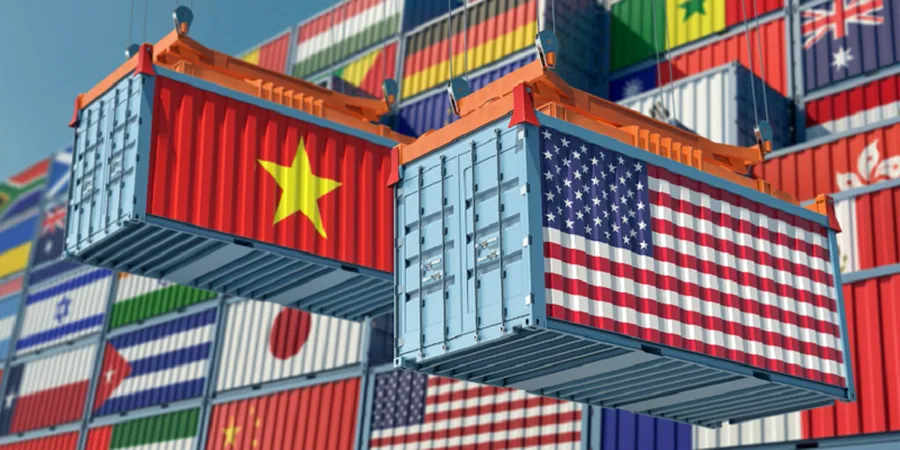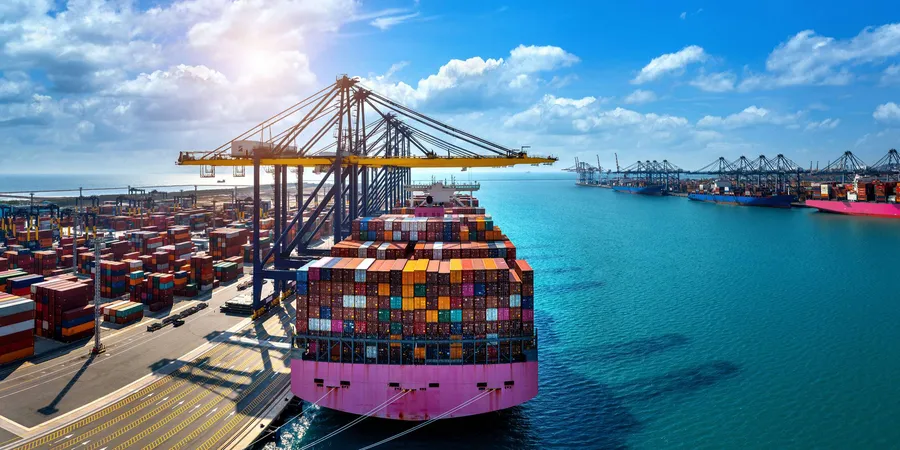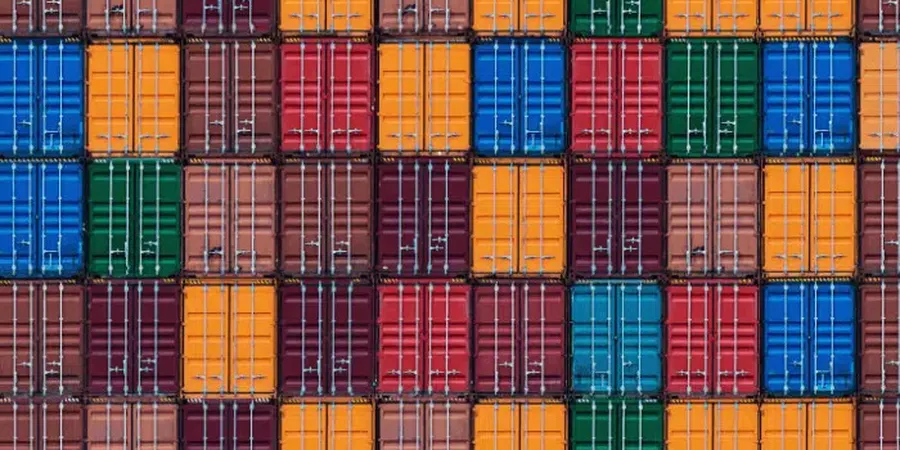12 Major Ports Of Norway
Ports are critical to global economic progress and development. They contribute to economic progress by facilitating commerce and assisting supply networks.
Norway is a country with a long coastline that stretches along the North Atlantic Ocean and the Barents Sea. The Scandinavian country has a thriving economy and multiple world-class ports due to its strategic location.
Let’s take a look at all the major ports of Norway in this article.
Port of Oslo
The Port of Oslo is the principal port of Norway. The Sjursya container terminal receives and delivers consumer goods across Norway. Half of Norway lives within a three-hour drive of the port. Oslo Port, with its advanced and effective terminals, is a natural logistics centre in Norway.
Cargo of more than 6 million tonnes regularly travels to and from Oslo by sea each year. The Port of Oslo has its headquarters in Vippetangen and its facilities in Sjursoya and employs 100 people regularly. The Oslo Harbor Guard operates 24 hours a day, seven days a week, and regulates traffic in the Oslo Municipality marine region.
Port of Narvik
Fagernes is home to the Narvik Terminal. The terminal has developed electronic access control, which implies that any staff with accessibility to the terminal must be authorized in advance by Port Control.
The Port Control gives key cards to visiting vessels upon their arrival. Narvik is the third- most populous municipality in Nordland county of Norway.
Narvik port is critical to the city’s development as a logistics and transportation hub. Therefore, it was an obvious choice for LKAB as it does not freeze in the winter. The port of Narvik ships iron ore to countries all over the world. Every year, 18-20 million tonnes of cargo travels via this port. In the year 2005, this port got the title ‘Motorways of the Sea.’
Port of Bergen
Bergen port sits at the mouth of Byfjorden in western Norway. The port handles several cargo types, including breakbulk, Ro-Ro, passengers, offshore containers, and bulk liquids. In addition, there are some other facilities for naval, scientific, recreational, and fishing vessels. The islands of Askoy, Holsnoy, and Sotra naturally protect the port. Bergen is Norway’s second-largest port and one of Europe’s most major cruise locations.
Its primary goals are to encourage marine transportation and to oversee, maintain, and expand port facilities. Bergen Port is devoted to the development of creative and practical solutions for a more environmentally friendly port. The port provides numerous services such as a comfort centre for pleasure craft tourists, hydration points, waste disposal facilities, hazardous waste disposal, toxic waste recycling, fire protection, and WiFi.
Port of Borg
All facilities are easily accessible from Borg Haven Fredrikstad. It has an enormous capacity and handling system, efficient cargo handling and short turnaround periods for the boats. As a result, the port is a natural choice for the transportation business and is a partner of choice in maritime warehousing.
The Port of Borg connects the marine, land, and air domains of Norway. It has both indoor and outdoor storage rooms and also administers the renting of several berths, the majority of which exists at Hvaler. In collaboration with the tourism sector, the port also provides cruise liner calls.
Port of Flekkefjord
Flekkefjord Port is a minor port in Norway. Rasvaag, Kirkehavn on Hittero Island, and Risholmen near the fjord’s entrance are three well-protected harbours. They are all deeper than 9.8m. Shipping, engineering, fishing, and agriculture are the principal industries. In addition, it provides essential naval bases such as bays and terminals and the standard infrastructure.
The port town is a renowned tourist attraction due to its attractive setting. The port authorities here place a premium on environmentally friendly operations and are mainly concerned with reducing emissions. Flekkefjord Port is critical to the economy of the region.
Port of Drammen
Drammen port is in a particularly unusual setting. Drammen centrally sits in Norway’s most heavily packed region, with half of the country population within a 150-kilometre radius.
The Port of Drammen is one of Norway’s most sophisticated ports, and it is now wholly realizing its aim of being a multimodal transportation hub. It is a communications and transportation centre through which vehicles, boats, and railways travel.
Drammen is a multimodal port that handles commodities received via multiple modes of transportation. Its position as a significant logistic crossroads in the transfer of freight between different modes of transportation is reinforced by daily trains from Drammen to various destinations in Norway and overseas.
Port of Stavanger
Stavanger, north of Gibraltar, is one of Europe’s rapidly expanding cruise ports. As the third-largest Norwegian cruise port, Stavanger and its surroundings have become a frequent and appealing stop on cruises to Norway.
This port’s primary tasks include the administration of commodities, marine, and ferry traffic. Other vital operations include pleasure boat tourism, property management, and collaborations with event organizers and public-sector entities.
In terms of Europe, the port is in a central location. The port receives 55,000 yearly calls, making it the largest oil and gas cluster in the world.
Port of Haugesund
Haugesund Port is a small port in Norway. The port provides convenient road access to a massive southern area of Norway, manages its seafront, runways, land areas, and storage, and assists clients. The Port of Karmsund also provides anchoring, water and energy delivery, and garbage disposal services.
Port of Tromso
Troms is Norway’s Arctic capital, with a population of 70,000 people. Tromso is a modern city with luxury hotels, bustling cafés, a restaurant serving top quality seafood, a vibrant cultural life, and fascinating art museums.
The Port of Tromso is investing heavily in the city centres, including new and enhanced docks and facilities and a new cruise terminal. As a result of these developments, cruise ships will dock in the city centre, putting passengers and staff in the centre of all events.
The Port of Tromso is a significant fishing and tourism port of Norway, covering a total land area of 2 million m2. It also has offices and warehouses space of around 34,500 m2. The port is also a crucial logistical hub in the far north of the region.
Vessel tugs, mooring aid, shipping tools and equipment, electronic work of ships, subsea services, ship mechanics, hydraulics, and several other services are available at this port. Tromso port also serves as a mini craft harbour and has commuters, freight, and freezer facilities.
Port of Bodo
The cruise port of Bod has the most options. The metropolitan town of Bod provides magnificent Arctic adventures, magical nature, and gastronomic delights just outside the door in the unique north. The Port of Bodo is strategically placed in Norway’s waterway and used as a fishing and general shipping facility.
The port is planning significant expansions, including the construction of a brand-new fishing port. The port serves as a transportation hub, with railway tracks going all the way to the dock. In addition, the port has its trucking service, a wheel loader, a vehicle with a crane, mowing services, and a 50-foot harbour boat with a crane.
Port of Aaheim
Aaheim sits on the Vanylvs Fjord on the north-western coast of Norway. The Torvholmen islet borders the ice-free harbour towards the west and the Norwegian mainland to the south and east. The yearly global consumption of olivine is around 5,000,000t, half of which ships from Aaheim.
Port of Batsfjord
The fjord of Btsfjord sits on the north coast of the Varanger peninsula. Batsfjord is a port town and a municipality section of Finnmark. The Hurtigruten coastal express ferry makes regular trips to Batsfjord. Historically, there were more villages in the municipality that over time were abandoned. Makkaur, Hamningberg, Hamna, Nordfjord, and Sandfjord are among these villages.
Ports are essential for supporting economic activity in the hinterland since they are a vital link between sea and land traffic. Thus, ports provide not just an economic but also a social function as job creators.
Source: Marine Insight


